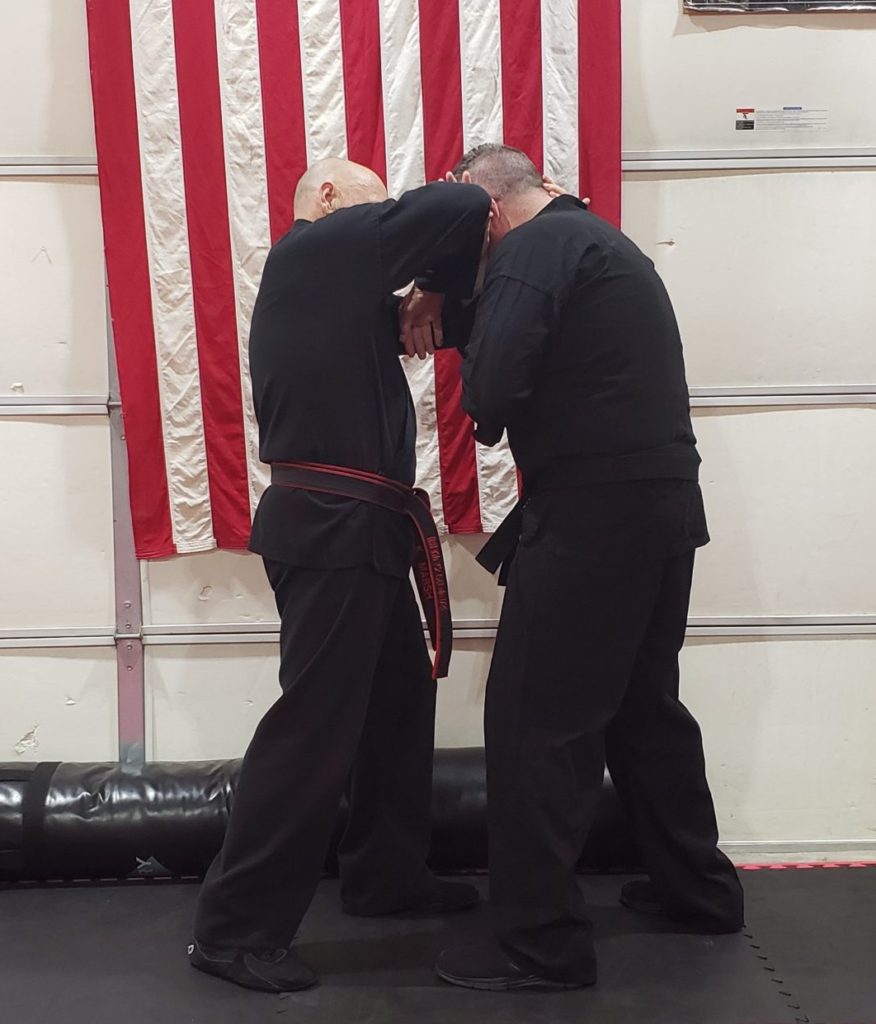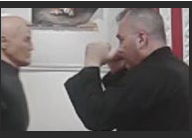Every martial art was started by someone. Aikido by Ueshiba. Judo by Kano. BJJ by Gracie. Tae Kwon Do by Hong Hi. The list goes on. Do we hold ourselves in the same class as those individuals? No. However, with a combined 70 plus years of study in combat arts between us, “we know a thing or two because we’ve seen a thing or two…”

So why the new style? Well, after years of trial and error, injuries, and actual fights, we found out what techniques have a good chance of success, and what techniques really don’t. We know the difference between martial arts, martial sports, and combatives. Martial arts are those traditional styles that focus on structured movements, controlled sparring, etc. Aikido and kung fu fall into this category. These have some practicality in self defense. Martial sports are styles like boxing, judo, tae kwon do, and Brazilian jiu jitsu. One can compete in organized matches and/or tournaments which are governed by rules, officials, and take place on padded floors. These styles offer even more options for practical self defense, however, they have limitations as well. The boxer who punches someone in the face with true bare knuckles with the same force and speed as he does with a wrapped and gloved hand risks significant injury. The bjj practitioner who pulls guard onto a concrete parking lot and exposes himself to a knife attack will pay the price, and so on. Since one fights like they train, and under pressure resorts to what they know, this can be problematic. Combatives, on the other hand, like Koritsu Sento, focus not on kata, nor do they spar for points. Instead, KS was created to employ the most effective and efficient (hence the name, Koritsu Sento) techniques to end a fight as quickly and decisively as possible while mitigating injury to the practitioner.

The punching from boxing, but we teach palm heel strikes to hard targets to keep your hand intact. The kicking from kenpo, but we teach to kick no higher than the groin, and the legs and knees are our targets. Wristlocks and throws from aikido. Elbows and knees are the best close in weapons you have. We teach nerve strikes such as the brachial stun, common peroneal, and pressure points like the philtrum press and suprasternal notch. Some of the simpler throws from judo, take downs from wrestling and bjj, and ground fighting, not grappling. Knife, stick and pistol craft round out brown and black belt levels.

This style is simply our interpretation of some techniques most likely to succeed in as many given situations as we could envision. Between Kip’s military background, including Ranger School and Marine Infantry training to include extensive martial arts training, and Tony’s martial arts training combined with a 25-year law enforcement background subduing individuals on concrete, grass, and indoors, we desired to share the knowledge gained between us by sharing what techniques have worked for us in actual fighting experiences. We don’t claim this to be the be-all-end-all style. We just know its contents have worked for us, and believe, with lots of practice, they will for you too. Thanks for your time, and we hope to see you in class, whether in person, or online!
Tony

Well said Tony. I am honored to be working with you in KS.
And I, you sir.